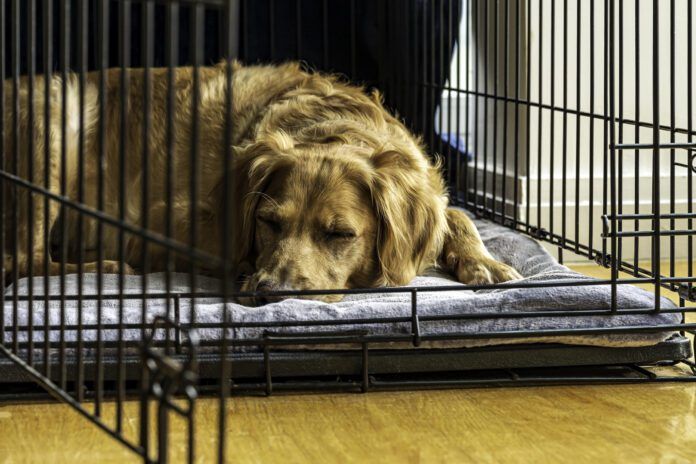Crates are management tools meant to help your dog feel safe during your absence and other times he may need to chill. Dogs who learn to love their crates use them independently for relief and safety from thunderstorms or fireworks, when they need a break from holiday commotion, hoopla of houseguests or even just because they like it!
How to Crate Train a Rescue Dog
- Get a crate large enough for him to sit, lie down (full extension) and turn around. Match durability with your dog’s size.
- Encourage him to enter the crate on his own.
- Make it an inviting space with a bed/blanket, appropriate chew toys, treats.
- Go slow. In small increments, work up from a few minutes in the crate to longer periods.
- If your dog vocalizes or paws at the floor or is otherwise stressed, wait for the split second of calm before releasing so you reward calm behavior.
Tips:
- If your dog is stressed in his crate, go back to shorter increments of time and build from there.
- If he’s just not having it try a dog-proof room or area of the house and follow same steps.
- Some dogs do not like confinement even for the briefest of times. In those cases, consider a house sitter, small scale reputable daycare or reach out to a professional rewards-based trainer.
Dos
- Do find a long-lasting chew your dog loves: save it only for crate time.
- Do exercise your dog first: set him up for success to rest.
- Do put the crate in a low-traffic area for privacy and security.
- Do see if your dog likes a blanket/cover over the crate to help create a safe space.
- Do keep the door open all the time so he can go in at will and chill.
- Do provide water.
Don’ts
- Don’t go too fast. Allow your dog to ease into the idea at his pace.
- Don’t immediately confine for long periods.
- Don’t confine for longer than necessary. A full workday can be too much for any dog. See if a friend, neighbor or even qualified pet sitter can come give him a break.
- Don’t force him into the crate.
- Don’t use it as punishment. Ever.
How to Crate Train an Older Dog
Follow the same steps! Additional considerations should be given to padding and for space, particularly if your dog has arthritis or is showing any signs of lameness and especially if symptomatic of canine cognitive dysfunction (doggy dementia). Always good to check in with your vet here.
How to Crate Train a Dog with Separation Anxiety
If your dog already suffers from separation anxiety, or the equivalent of human panic attacks, crates are not the answer. Separation anxiety is a serious issue that needs serious help: call in the pros. You can find a certified rewards based CSAT (Certified Separation Anxiety Trainer) trainer here.
Crates can be a dog’s den or his dungeon. Create positive associations and give your dog safety and security and yourself peace of mind.






